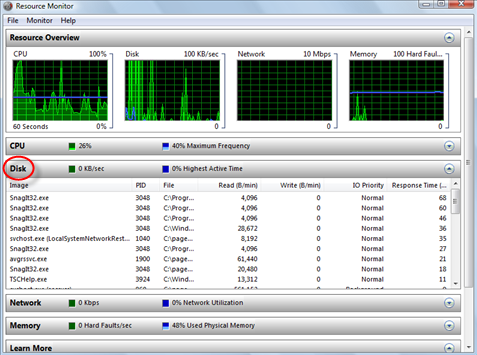

- #Disktivity install#
- #Disktivity pro#
- #Disktivity windows#
(The latest version, 2.0, includes support for Windows 10.) Step 2: Find the TrayStatus icon in your system tray, right-click it and choose TrayStatus.
#Disktivity install#
I have an application server in our DMZ that will be using: would be the best route to provide a SSL certificate for it? Our company website () is hosted by a third party and has an SSL certificate already.Sho. Step 1: Download, install and run TrayStatus. Best practice for SSL certificate for server in DMZ? Security.Good day fellow Spiceheads,I am struggling with a simple task, a disk expansion on a VM.The C drive expands no problem, but the D drive gives me the error as per the headline.I logged a call with VMWare and was advised to disable replication and then try. Invalid operation for device '0' Virtualization.Google Chrome bug lets sites write to clip. Welcome to September 2022! In some ways, it feels like it's taken forever to get here in other ways, time is flying by way too quickly.
#Disktivity pro#
Snap! Chrome clipboard bug, private cellular, Win11 Start, IT Pro AI art, & more Spiceworks Originals. Kind of a re-hash of an old question (2012), I'm currently removing old kit from our racks & given some of it is now rapidly heading for 13 years + old & has only just been removed from service (Poweredge 2970 anybody?) I was wondering what the consensus. How Old is too Old (Servers, not staff -) Hardware. Expand the folder of the value you saved in a text editor. Next, open Regedit and browse to HKEYLOCALMACHINE\System\CurrentControlSet\Enum\PCI\. From here, copy the value listed and paste it into a text editor like Notepad. This trap simply # catches the error and continues. Go to Details in Device Manager and choose the Device instance path from the drop-down menu. # If a process exits between the time we capture the processes and now, # then we will be unable to get its NextValue(). "Process", "IO Data Bytes/sec", $processName "Process", "IO Data Operations/sec", $processName Notification Bar will appear if SmartLogic detected event on. "Process", "IO Other Bytes/sec", $processName "Process", "IO Other Operations/sec", $processName If we don't, # then they fail to return any information for a few seconds. $processName = get-processName $process # We store the performance counter objects in a hashtable. $process = $( throw "Please specify a process for which to get disk usage.") # As a heuristic, gets the total IO and Data operations per second, and # returns their sum. Start-sleep -m ( $pollInterval - $elapsed) $lastPoll = get-date if( $pollInterval -gt $elapsed) $elapsed = ( get-date).Subtract( $lastPoll).TotalMilliseconds $lastWindowHeight = $windowHeight # Sleep for their desired amount of elapsed time, # adjusted for how much time we've actually spent working. $notDisplayed = ( $processes.Count - $output.Count) If( $processes.Count -gt ( $windowHeight - 7)) # Display the results $output | format-table Id,ProcessName,MainWindowTitle,Processor,Disk,WorkingSet Select-object -First ( $windowHeight - 7) $output = $processes | sort -desc $sortCriteria | You can also minimize DiskMon to your system tray where it acts as a disk light, presenting a green icon when there is disk-read activity and a red icon when there is disk-write activity. If the window is to short, show no output. DiskMon is an application that logs and displays all hard disk activity on a Windows system. # Tailor the length of the list to the height of the # window. ( -not ( $lastWindowHeight -eq $windowHeight))) # Since clear-host makes the screen flash, we only do so when # we have fewer processes than we did the last time if(( $processes.Count -lt $lastSnapshotCount) -or ` 
$activity = get-diskActivity $process $process | add-member NoteProperty Disk $activity $cpuPercent = get-cpuPercent $process $process | add-member NoteProperty Processor $cpuPercent # Get the disk activity, based on I/O Perf Counters, # for the process in question. # Go through all of the processes we captured foreach( $process in $processes) # Set the cursor position, get the processes, and store # the time of the snapshot $host.UI.RawUI.CursorPosition = $coords $processes = get-process | sort Id # The coordinates to which we position the output $coords = new-object .Coordinates 0,0Ĭlear-host while( -not $host.UI.RawUI.KeyAvailable) # Store the performance counters we need # for the CPU, and Disk I/O numbers $cpuPerfCounters = $null $lastPoll = get-date $lastSnapshotCount = 0 # usage: poll-process # sortCriteria must be one of "Id", "ProcessName", "MainWindowTitle", # "Processor", "Disk", or "WorkingSet" # pollInterval is specified in milliseconds # param( # poll-process.ps1 # Continuously display a process list, sorted # by the desired criteria.





 0 kommentar(er)
0 kommentar(er)
